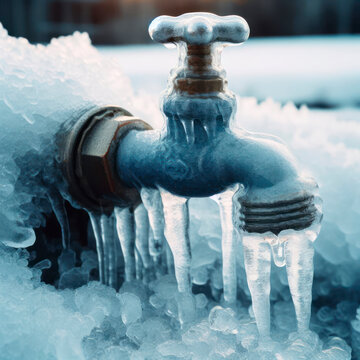Preventing Pipes from Freezing: Best Tips
Preventing Pipes from Freezing: Best Tips
Blog Article
Nearly everybody has got their own unique way of thinking involving Helpful Tips to Prevent Frozen Pipes this Winter.

Cold weather can damage your pipes, especially by freezing pipelines. Below's just how to prevent it from occurring and what to do if it does.
Introduction
As temperatures decrease, the risk of icy pipelines rises, potentially leading to pricey repairs and water damage. Recognizing exactly how to prevent frozen pipelines is crucial for home owners in cool environments.
Comprehending Frozen Pipelines
What triggers pipes to ice up?
Pipes ice up when subjected to temperature levels below 32 ° F (0 ° C) for expanded durations. As water inside the pipelines ices up, it broadens, taxing the pipeline walls and potentially creating them to break.
Threats and damages
Frozen pipes can result in water supply interruptions, building damage, and expensive repair work. Ruptured pipes can flooding homes and cause considerable architectural damages.
Indications of Frozen Pipes
Determining icy pipelines early can prevent them from rupturing.
Just how to recognize frozen pipelines
Try to find lowered water flow from faucets, unusual smells or sounds from pipes, and visible frost on subjected pipelines.
Prevention Tips
Insulating vulnerable pipelines
Cover pipes in insulation sleeves or utilize heat tape to safeguard them from freezing temperatures. Concentrate on pipes in unheated or outside locations of the home.
Home heating techniques
Keep interior spaces adequately heated, especially areas with plumbing. Open cabinet doors to allow warm air to flow around pipelines under sinks.
Shielding Exterior Pipes
Garden tubes and exterior taps
Separate and drain garden hoses prior to winter. Install frost-proof spigots or cover exterior taps with insulated caps.
What to Do If Your Pipes Freeze
Immediate activities to take
If you think frozen pipelines, maintain taps available to soothe stress as the ice melts. Use a hairdryer or towels soaked in hot water to thaw pipes slowly.
Long-Term Solutions
Structural changes
Think about rerouting pipes away from outside wall surfaces or unheated areas. Include additional insulation to attic rooms, basements, and crawl spaces.
Updating insulation
Buy high-grade insulation for pipes, attics, and wall surfaces. Correct insulation aids maintain consistent temperatures and minimizes the danger of icy pipelines.
Verdict
Preventing frozen pipelines calls for aggressive actions and fast actions. By recognizing the causes, signs, and safety nets, home owners can shield their pipes throughout winter.
5 Ways to Prevent Frozen Pipes
Drain Outdoor Faucets and Disconnect Hoses
First, close the shut-off valve that controls the flow of water in the pipe to your outdoor faucet. Then, head outside to disconnect and drain your hose and open the outdoor faucet to allow the water to completely drain out of the line. Turn off the faucet when done. Finally, head back to the shut-off valve and drain the remaining water inside the pipe into a bucket or container. Additionally, if you have a home irrigation system, you should consider hiring an expert to clear the system of water each year.
Insulate Pipes
One of the best and most cost-effective methods for preventing frozen water pipes is to wrap your pipes with insulation. This is especially important for areas in your home that aren’t exposed to heat, such as an attic. We suggest using foam sleeves, which can typically be found at your local hardware store.
Keep Heat Running at 65
Your pipes are located inside your walls, and the temperature there is much colder than the rest of the house. To prevent your pipes from freezing, The Insurance Information Institute suggests that you keep your home heated to at least 65 degrees, even when traveling. You may want to invest in smart devices that can keep an eye on the temperature in your home while you’re away.
Leave Water Dripping
Moving water — even a small trickle — can prevent ice from forming inside your pipes. When freezing temps are imminent, start a drip of water from all faucets that serve exposed pipes. Leaving a few faucets running will also help relieve pressure inside the pipes and help prevent a rupture if the water inside freezes.
Open Cupboard Doors
Warm your kitchen and bathroom pipes by opening cupboards and vanities. You should also leave your interior doors ajar to help warm air circulate evenly throughout your home.

As a person who reads about How To Avoid Freezing Pipes, I thought sharing that information was a good thing. Sharing is good. Helping people is fun. I treasure reading our article about Winter Plumbing Precautions: Preventing Frozen Pipes.
Call Today Report this page